10 states where college enrollment has dropped the most over the past decade

Canva
10 states where college enrollment has dropped the most over the past decade
An empty college classroom.
A college degree used to be considered the golden ticket to starting a good life. Over the past several years, something’s changed.
According to a 2023 Wall Street Journal-NORC poll, 56% of Americans think a four-year degree is not worth the cost. And fewer high school graduates are enrolling in college right away, according to a 2023 report from the National Center for Education Statistics.
The Hechinger Report warns that this trend correlates with labor shortages, a weaker economy, growing racial inequities, and even a lower life expectancy.
All told, 44 states saw a decline in college enrollment between 2010 and 2019. The trend is fairly recent. When you look back to the start of the millennium, only three states—Alaska, Michigan, and Illinois—have seen consistent enrollment drops. And while total U.S. enrollment is down 6.6% between 2010 and 2019, federal statistics show it’s actually up 128.8% compared to 1970, and only down 3.3% between 2019 and 2020.
EDsmart used data from the National Center for Education Statistics to identify the 10 states that have seen the greatest decline in undergraduate enrollment from the 2010-11 academic year to 2019-20. Although state-level data was available for the more recent 2020-21 school year, 2019 data was used to focus on longer-term enrollment trends separate from the effects of the COVID-19 pandemic. Enrollment numbers include all schools that “grant associate’s or higher degrees and participate in Title IV federal financial aid programs.”
Read on to see whether your home state made the list, and find out what each state is doing to address its falling numbers.
![]()
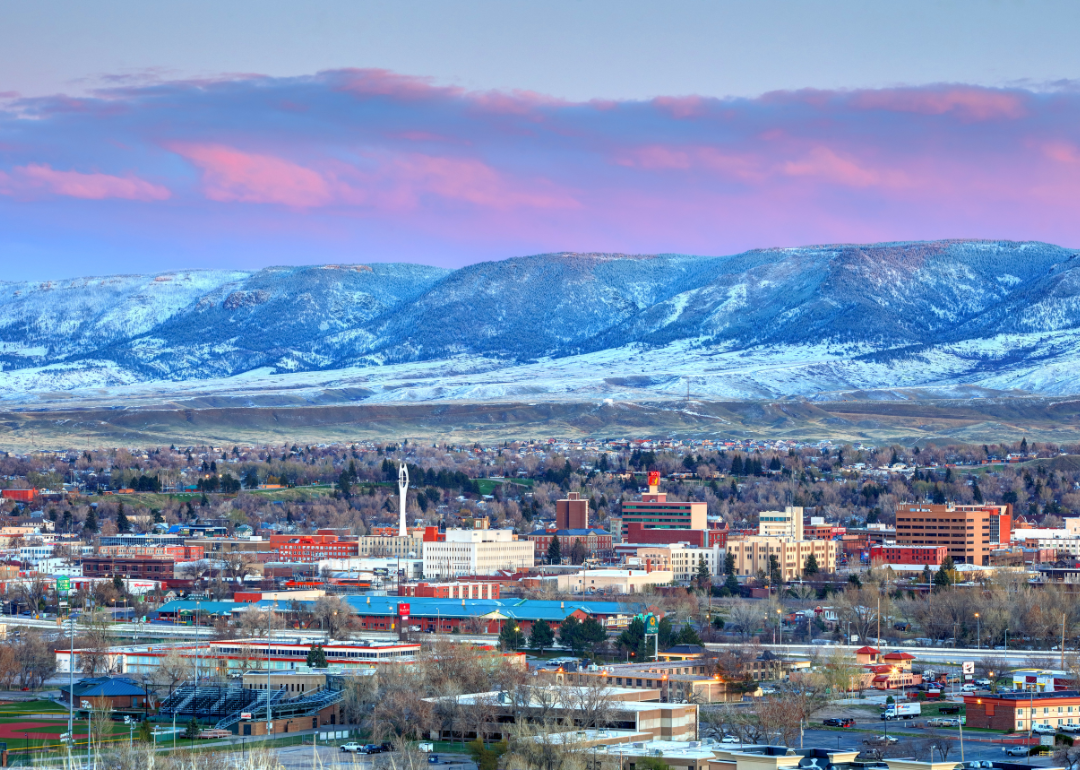
Canva
#10. Wyoming
An aerial view of Casper, Wyoming.
– Enrollment change, 2010-2019: -15.5% (5,925 fewer students)
– Enrollment change, 1970-2019: +112.7% (17,153 more students)
– Impact of pandemic, enrollment change 2019-2020: -4.4% (1,430 fewer students)
The 2018 and 2019 University of Wyoming freshman classes were the largest ever at the institution. But the school, has struggled to retain students in recent years, according to the Casper Star-Tribune, and university administrators are working with consultants to battle the drop.
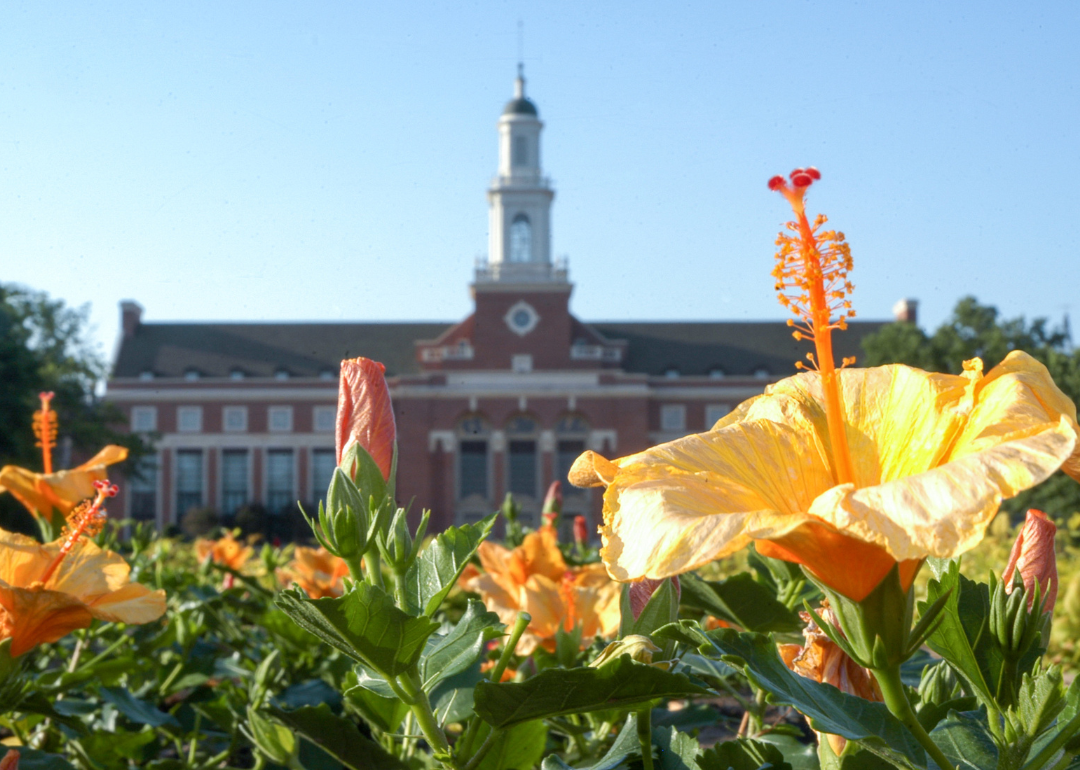
Canva
#9. Oklahoma
Orange Hibiscus flowers in front of Oklahoma State University.
– Enrollment change, 2010-2019: -16.4% (37,912 fewer students)
– Enrollment change, 1970-2019: +74.9% (82,493 more students)
– Impact of pandemic, enrollment change 2019-2020: -1.8% (3,434 fewer students)
While Oklahoma’s biggest schools—Oklahoma State University and the University of Oklahoma—saw modest changes in enrollment over the past decade, the state’s two-year universities took a serious blow, losing tens of thousands of students, according to data from the Oklahoma State Regents for Higher Education.
A University of Oklahoma economist worried in 2019 that the state’s low population of college graduates could significantly damage its economy, with job growth migrating to surrounding states. “The whole world is getting more technical all the time, and those who do not have the necessary education are going to fall further behind,” Robert Dauffenbach, then director of OU’s Center for Economic and Management Research, told The Journal Record.
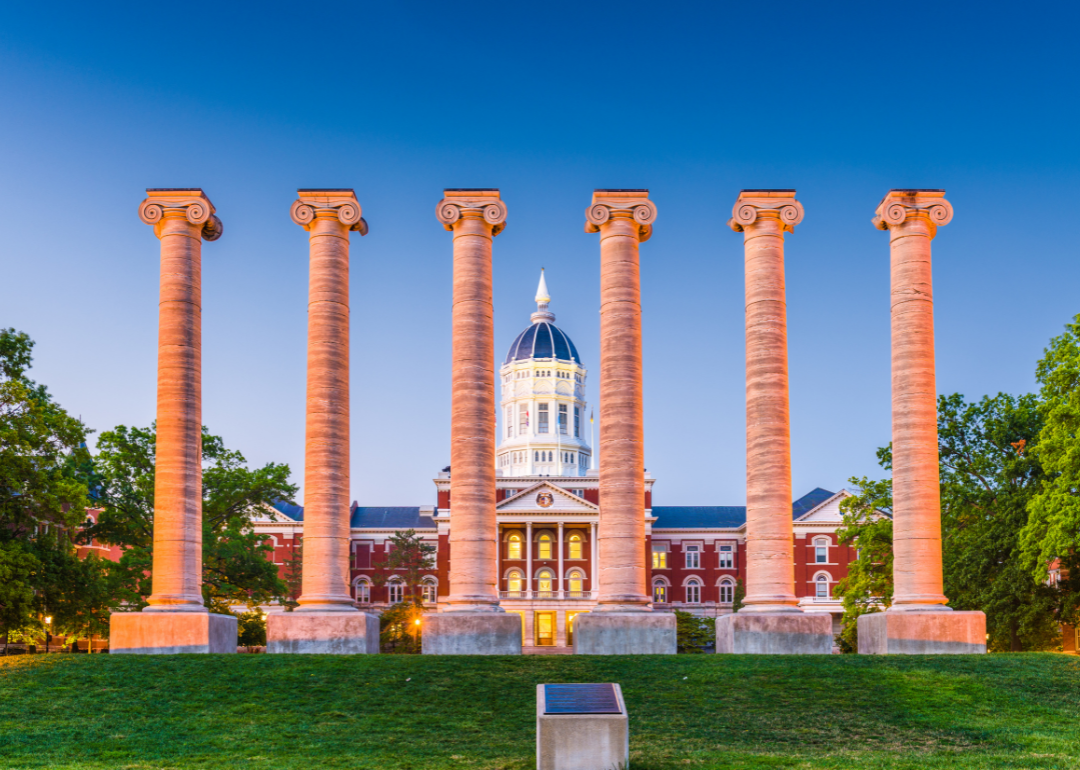
Canva
#8. Missouri
Large columns in front of the University of Missouri.
– Enrollment change, 2010-2019: -18.4% (82,037 fewer students)
– Enrollment change, 1970-2019: +97.2% (178,783 more students)
– Impact of pandemic, enrollment change 2019-2020: -5.5% (20,095 fewer students)
While some states are seeing their larger colleges and universities being hit the hardest by declining enrollment, it’s the smaller schools that have seen the biggest drop in Missouri. For example, Lincoln University lost almost one-third of its enrollments from 2016 to 2021 while larger institutions like the University of Missouri-Columbia have only seen a single-digit percentage loss.
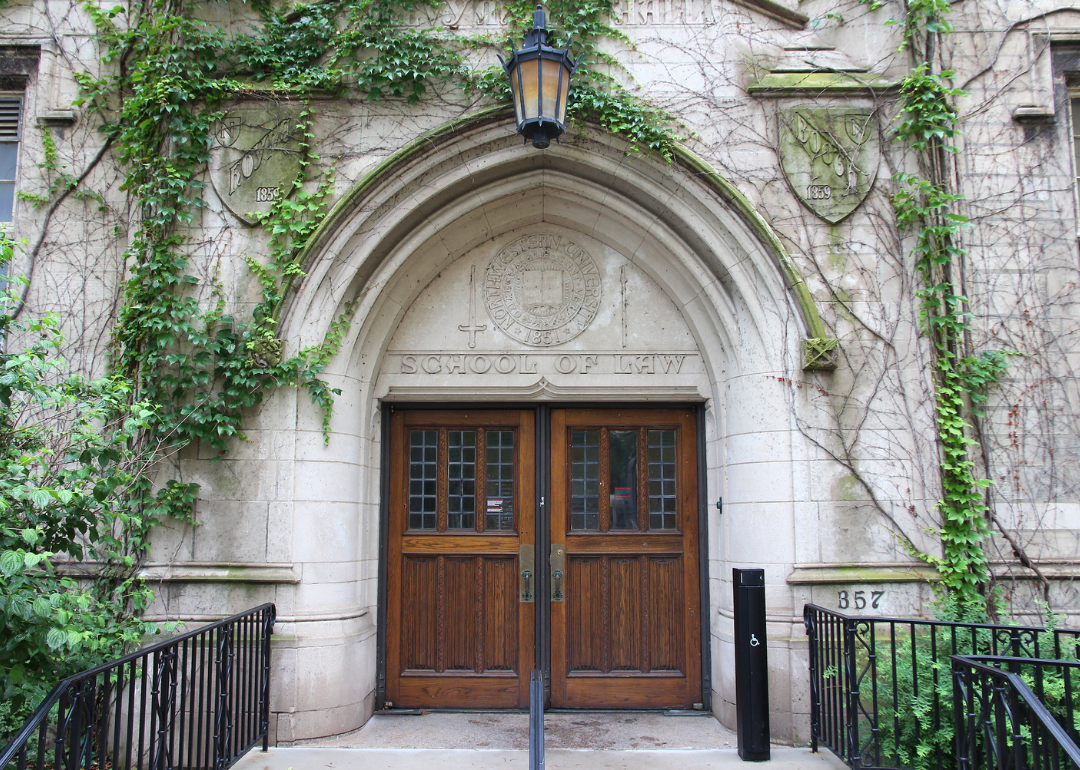
Canva
#7. Illinois
The School of Law entrance at Northwestern.
– Enrollment change, 2010-2019: -20.8% (188,340 fewer students)
– Enrollment change, 1970-2019: +58.9% (266,359 more students)
– Impact of pandemic, enrollment change 2019-2020: -5.1% (36,517 fewer students)
In Illinois, the strategy for reversing the enrollment trends at schools like Northeastern Illinois University is clear: Make higher education more accessible to students of color and transfer students with measures such as an increase in funding for need-based scholarships and support programs. A dramatic rise in tuition costs has made four-year degree programs inaccessible for thousands of would-be students.

Canva
#6. Hawaii
Beautiful green trees in front of Hawaii University.
– Enrollment change, 2010-2019: -22.6% (17,636 fewer students)
– Enrollment change, 1970-2019: +65.3% (23,875 more students)
– Impact of pandemic, enrollment change 2019-2020: -1.2% (744 fewer students)
Low unemployment and high costs of education led to a decrease in enrollment, the University of Hawai’i System said in a 2019 news release. That year, 9 in 10 of its schools saw a dip, with only one community college faring well. Some of those schools, however, saw huge increases in the first year of the pandemic, as students chose to stay closer to home, the Honolulu Star-Advertiser reported in 2020.
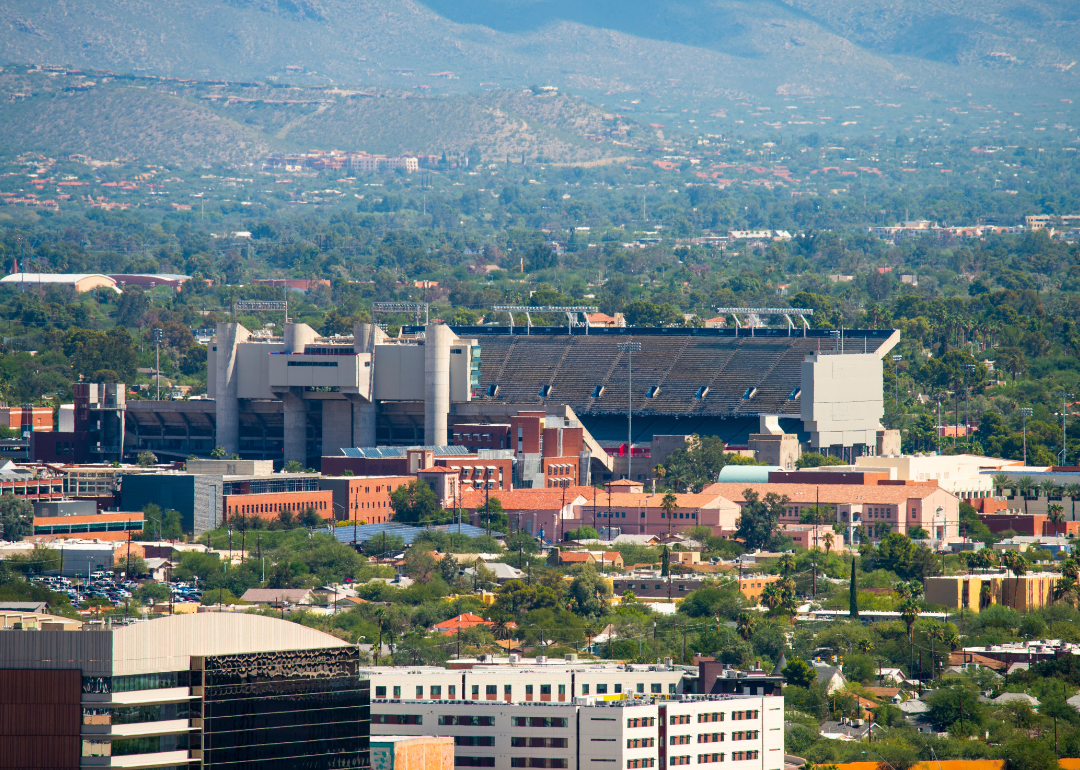
Canva
#5. Arizona
An aerial view of Tuscon with the Arizona University stadium in the background.
– Enrollment change, 2010-2019: -23.3% (184,727 fewer students)
– Enrollment change, 1970-2019: +455.7% (499,525 more students)
– Impact of pandemic, enrollment change 2019-2020: -1.5% (9,041 fewer students)
Drops in enrollment can seriously hurt the towns and businesses surrounding the schools.
Arizona’s colleges are “primary economic engines” of the state, Matthew Wagner, Main Street America’s chief program officer told Higher Ed Dive. A Helios Education Foundation report published in March 2023 found that a 20% enrollment increase would generate a whopping $5 billion in benefits to society per graduating class, including “lifetime earnings, better health, and increased workforce productivity.”
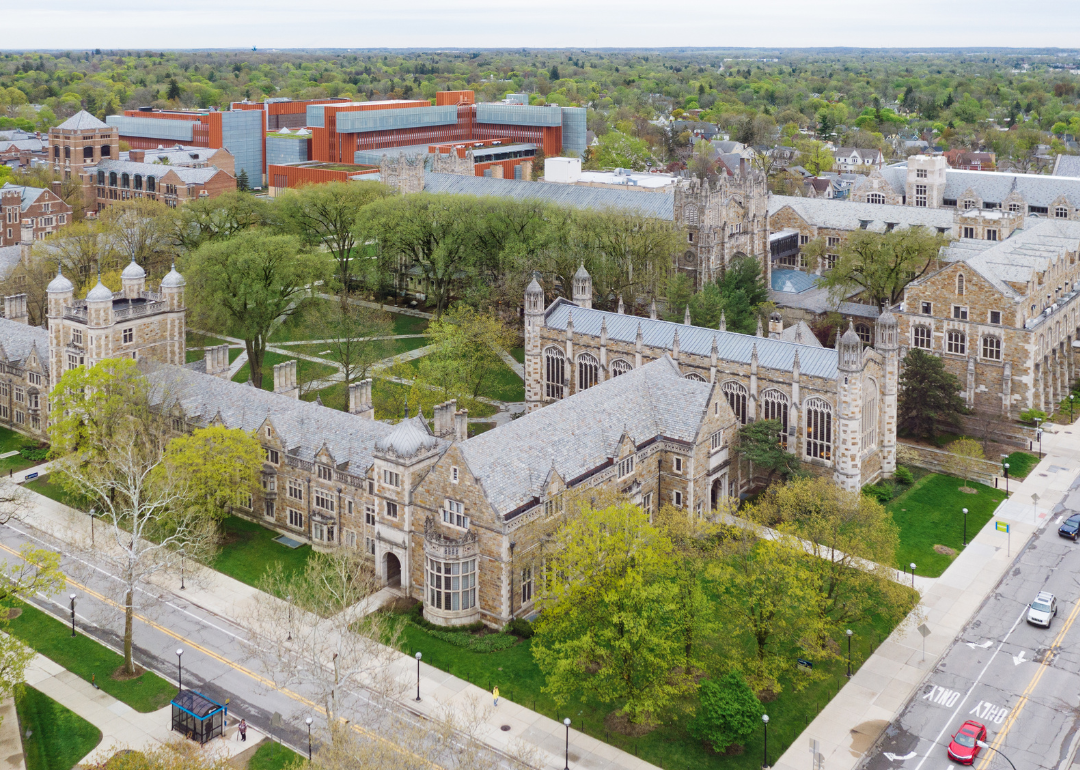
Canva
#4. Michigan
An aerial view of University of Michigan.
– Enrollment change, 2010-2019: -24.7% (172,254 fewer students)
– Enrollment change, 1970-2019: +33.8% (132,785 more students)
– Impact of pandemic, enrollment change 2019-2020: -6.7% (35,430 fewer students)
To fight the decline, Michigan has focused on creating more scholarship programs, including one focused on funding education for students aged 25 or older and bolstering its economy in other ways.
The governor and other leaders are working to create a state that attracts new and growing businesses, which in turn is expected to show prospective students that there will be ample job opportunities in the region upon graduation from schools like Michigan State and the University of Michigan.
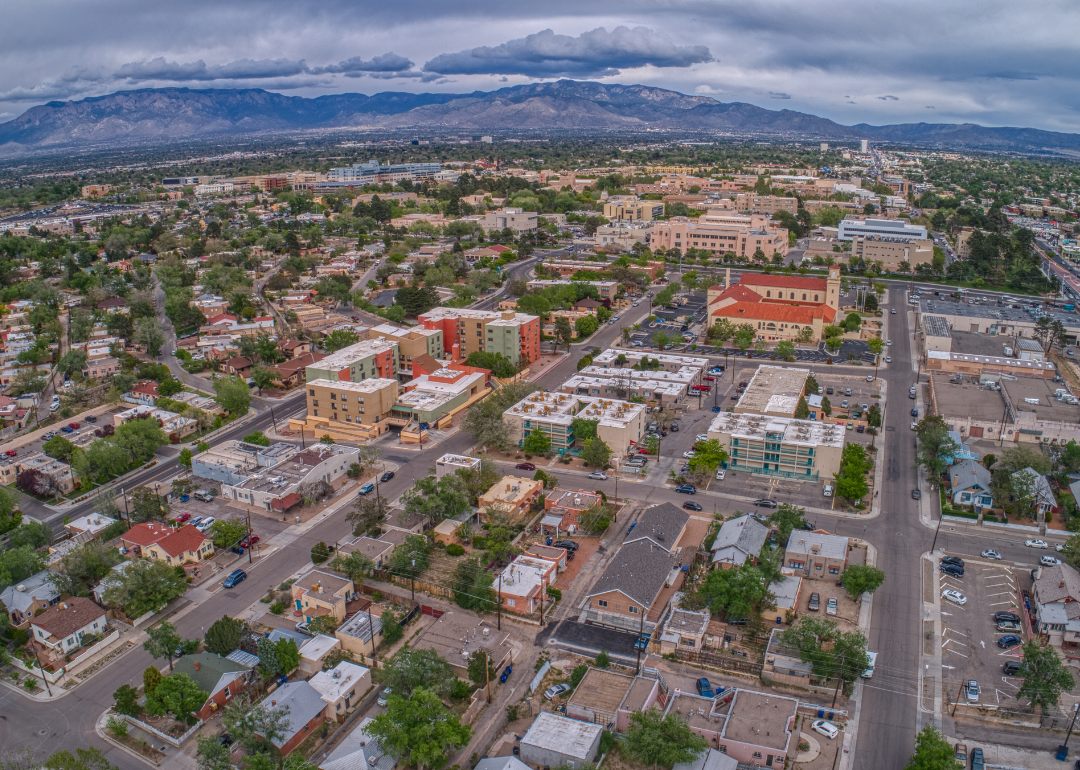
Canva
#3. New Mexico
An aerial view of University of New Mexico.
– Enrollment change, 2010-2019: -25.1% (40,841 fewer students)
– Enrollment change, 1970-2019: +173.7% (77,250 more students)
– Impact of pandemic, enrollment change 2019-2020: -9.5% (11,616 fewer students)
New Mexico may have seen a 25% drop in college enrollment between 2010 and 2019, but it seems the state may finally be stemming that tide. In a March 2023 press release from the governor’s office, it was revealed that the area’s public colleges and universities—including the University of New Mexico and New Mexico State—have seen a 6% increase in enrollment.
The state’s Higher Education Department attributes the jump to the Opportunity Scholarship, a new program that covers up to 100% of tuition for eligible residents.
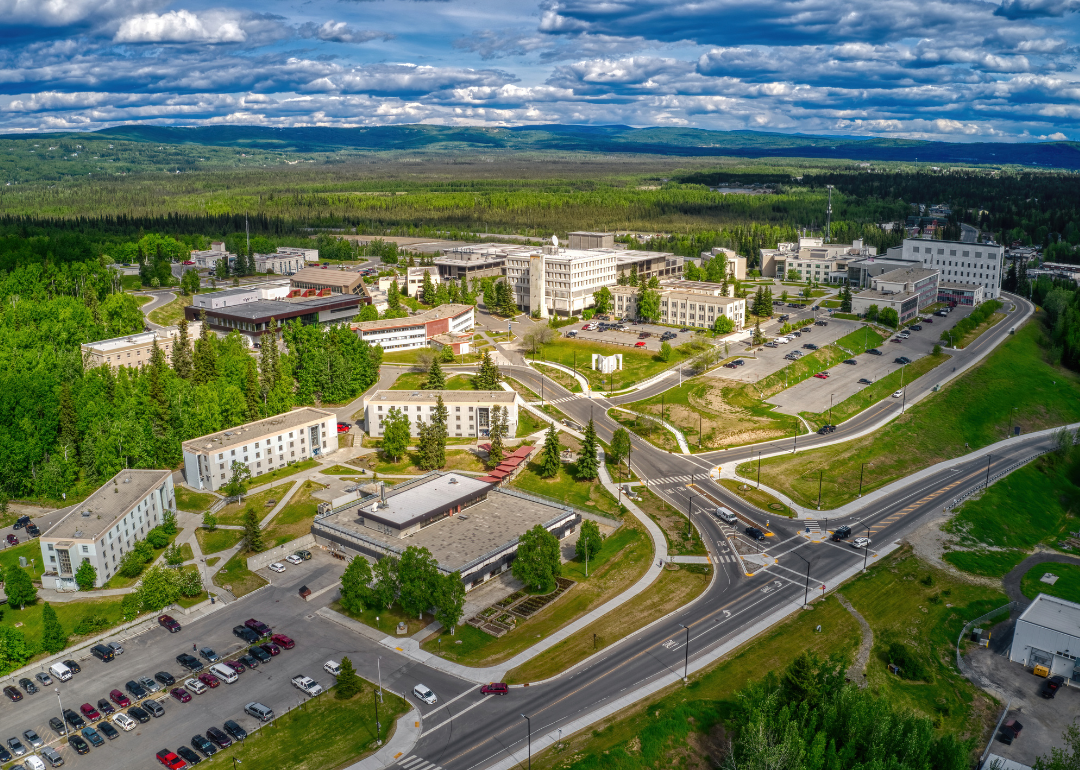
Canva
#2. Alaska
An aerial view of the state university in Fairbanks, Alaska.
– Enrollment change, 2010-2019: -32.9% (11,446 fewer students)
– Enrollment change, 1970-2019: +146.6% (13,882 more students)
– Impact of pandemic, enrollment change 2019-2020: -5.3% (1,247 fewer students)
Over the last decade, the University of Alaska system has been battling a whole host of challenges that affect its enrollment numbers. In 2019, the University of Alaska Anchorage was forced to cut bachelor’s programs in education after it lost accreditation for these undergraduate courses of study.
Then, the governor cut $70 million from the University of Alaska budget, forcing the freezing or elimination of academic programs and staff.
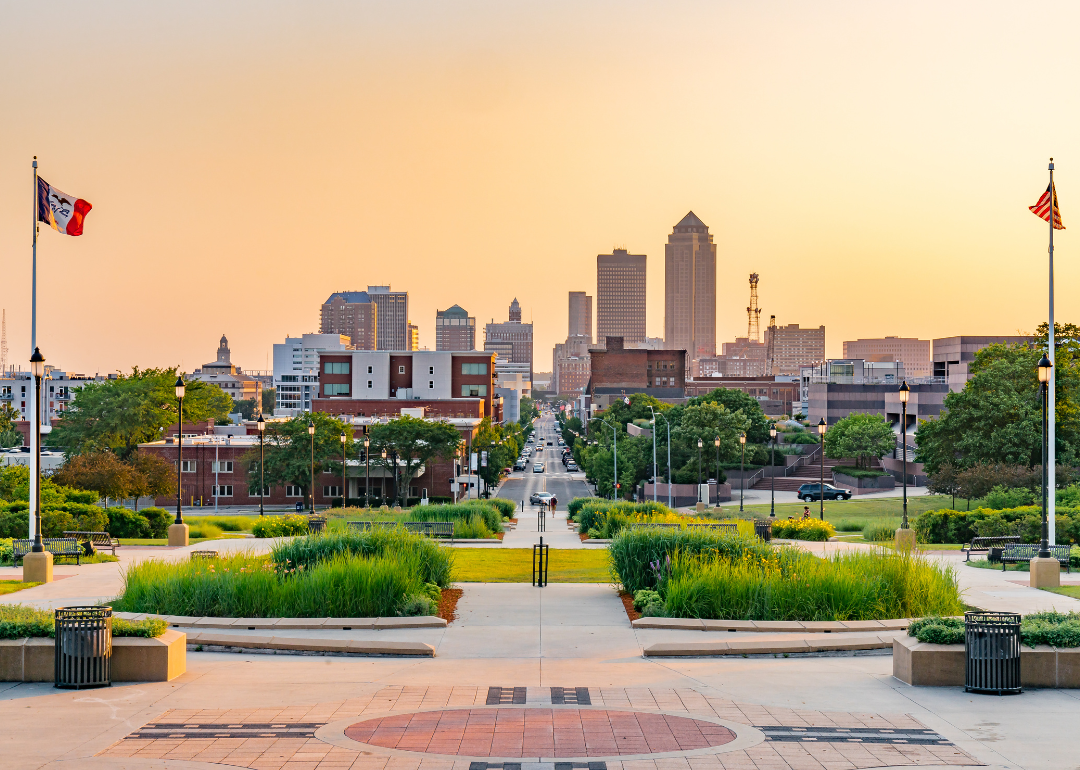
Canva
#1. Iowa
The Des Moines, Iowa skyline.
– Enrollment change, 2010-2019: -42.9% (163,834 fewer students)
– Enrollment change, 1970-2019: +100.2% (109,131 more students)
– Impact of pandemic, enrollment change 2019-2020: -4.5% (9,813 fewer students)
Iowa enrolls fewer higher education students than most of the nation, according to a State Higher Education Executive Officers Association report. That smaller population size means it more easily felt the effects of the pandemic, University of Iowa Vice President for Enrollment Management Brent Gage told The Gazette.
The university isn’t trying to grow but instead keep up consistent enrollment numbers, he said, and help those enrolled make it to graduation.
Data reporting by Emma Rubin. Story editing by Jeff Inglis. Copy editing by Tim Bruns. Photo selection by Lacy Kerrick.
Correction: A previous version of this article contained multiple errors, including misstating the size of budget cuts to the University of Alaska system and misspelling Oklahoma Gov. Kevin Stitt’s name. It also incorrectly or imprecisely described college trends in Wyoming, Missouri, and Arizona. The article has been updated to correct the errors.
This story originally appeared on EDsmart and was produced and
distributed in partnership with Stacker Studio.
